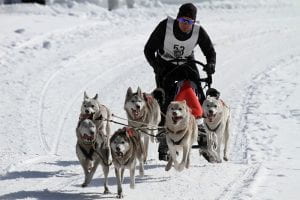When my daughter was 11 years old, all she could think about and talk about was getting a dog. She was obsessed with the idea of a family dog. She searched online for weeks to pick out the dog she thought would be the perfect fit. We ultimately found a miniature dachshund we would adopt and make part of our family. We have since added another dachshund (a rescue dog) to the family. We have become such a dog loving family that we spent much of our Super Sunday watching the Puppy Bowl prior to the Super Bowl. If you’re a dog fan like me, you probably find the different breeds quite interesting. One such breed, the Siberian Husky, or Alaskan Malamute, has been bred for a specific purpose: pulling sleds and working together. So, why do I bring up this particular breed of dog? Because leadership teams can learn a lot from sled dog teams.

During my career, I have been part of many leadership teams. Some were highly functioning, some not so much. What was it that made the highly functioning teams so good and made the less functional fall short? It can be easy to point out a number of specifics, but in truth, leadership teams fall short when one or more of the following is true:
- the team assumes shared or required knowledge exists between the members
- the team may lack the insights needed to support each other
- the team misinterprets each other’s strengths and roles; and
- the team lacks collective accountability and efficacy
How do leadership teams avoid these traps that are all-too common? Here are a few quick thoughts, connections to sled dogs, and one recommendation for staying out of these leadership sticking points.
- Assumption of knowledge: sled dog training with their handlers starts when they are young, often earlier than 4 months of age. With leadership teams, the training should begin as the team is formed. Each new member brings different knowledge to the group and should be brought in as part of a team-wide approach to learning. Even one new member changes the composition of the team, so assuming new training isn’t necessary would be a mistake and can lead to knowledge gaps for the team.
- Lacking appropriate insights: sled dogs are bred for the cold, having a double coat for insulation against the elements. Leadership teams will face challenges from all angles, needing their own ‘double coat’ to keep from wearing down when negative elements come to pass. In order for this to be a team-wide approach, each member must be committed to collective communication, regular check points on goal progress, and being in it together. The best teams I was a part of would have scheduled time to connect and ensure clarity of work. But what was extremely important were the unscheduled times when we could share conversations had among staff members so we all knew what was happening and what the direction was on any given point. It is much easier to have each other’s back when you know what the common goal is and everyone’s stance.
- Misinterpreted strengths and roles: every sled dog has a specific role in the line. The lead dog senses the cues from the handler, swing dogs are crucial to any change of direction, team dogs support the full team, while wheel dogs bring the power. Leadership teams are no different, with each member having a key role to the unit. Often times the lack of early training with a team can result in members not fully understanding their role, or the roles of others. If you’ve ever been part of team when this toe-stepping happens, you know how this can hamper the efficiency and relationships of a team. Gaining this clarity is so very important.
- Collective accountability and efficacy: sled dogs have a common goal, with each being accountable to the other members of the team. Likewise, leadership team members must have a shared goal, collective aspirations and vision for the road ahead. Lack of clarity on this essential element leaves the team on their own, with each trying to accomplish goals that may or may not mesh well together. High performance leadership teams will not move only to the goals of the lead dog. Rather, they must work collaboratively to have a shared vision of ideal state of their organization. When teams spend the time to get the goals clear, measureable, awesome, reasonable, and time-bound (SMART), they can perform at their highest level.
A recommendation: connect with me and let’s talk to see if our two day workshop, High Performance Leadership Teams from Road to Awesome is right for your team. It’s fully customized for your team’s needs, hits the key areas for leadership team success, and will have every member grateful to have professional development that is actually FOR leaders. Email me for more information at darrinmpeppard@roadtoawesome.net
Have a #RoadToAwesome week!!
Darrin

Be First to Comment